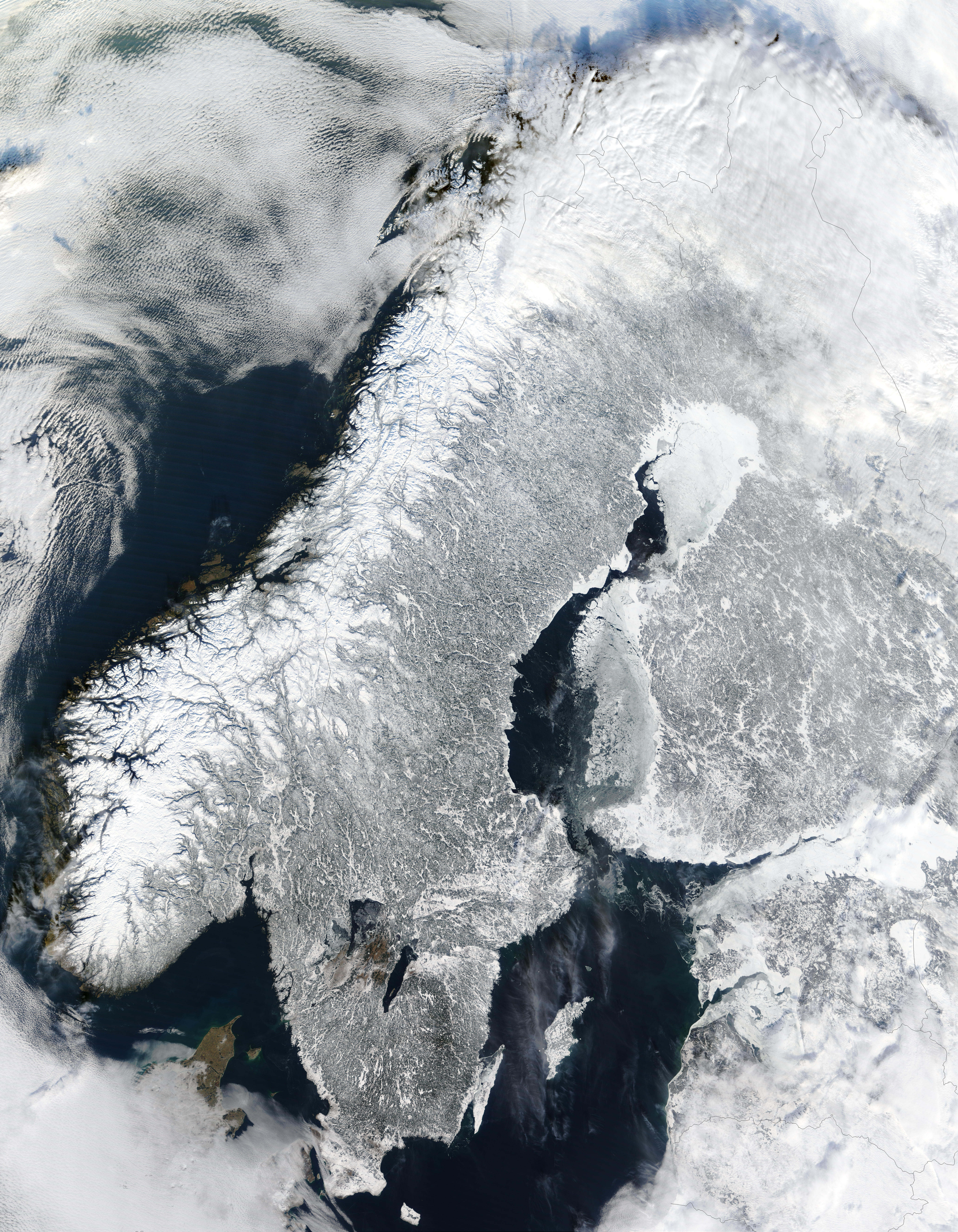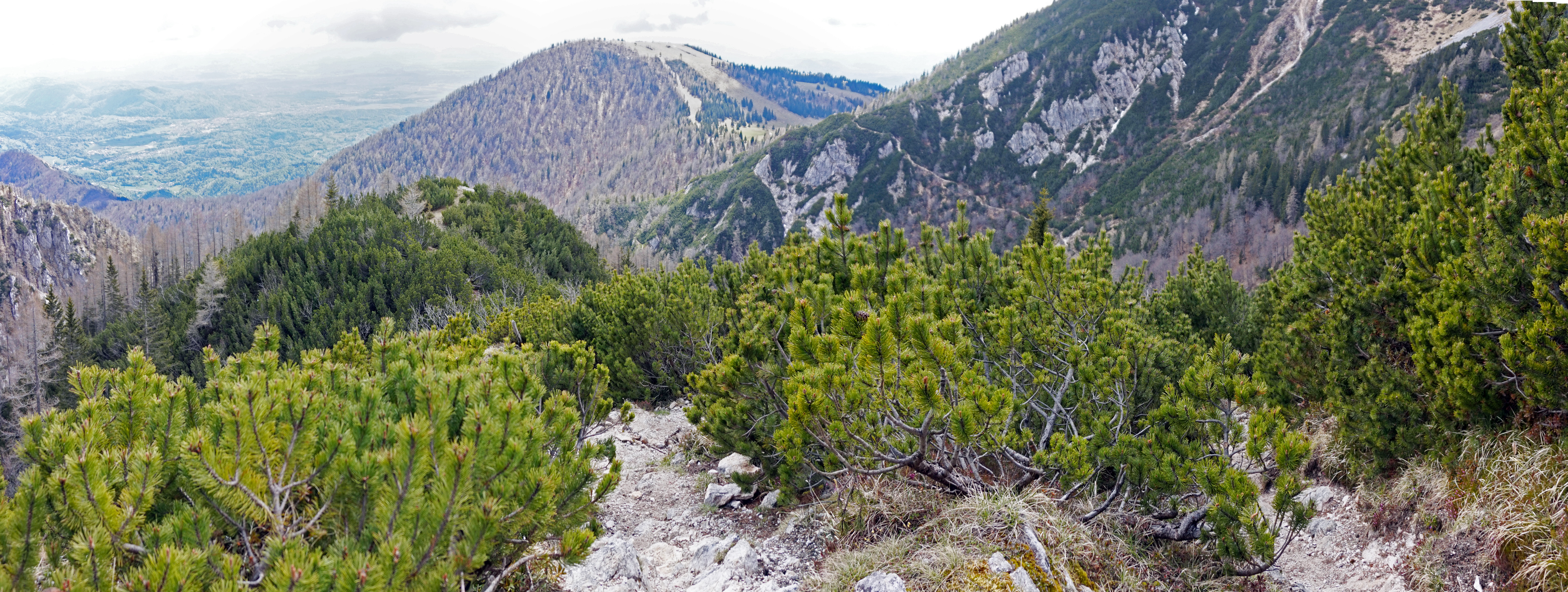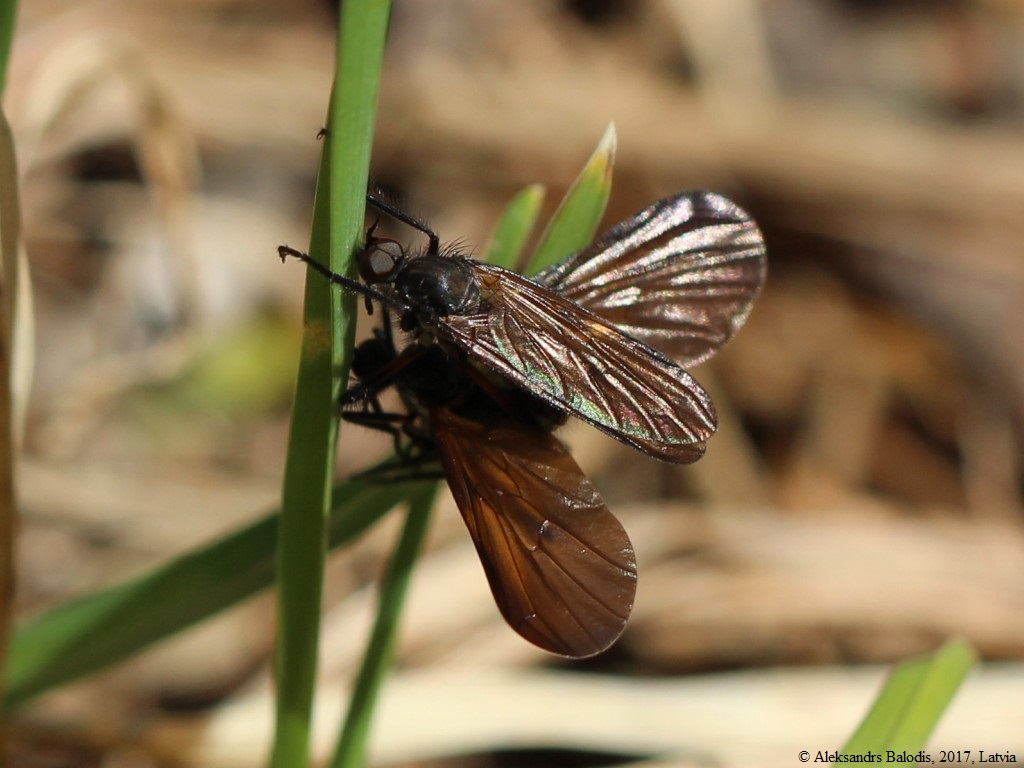Empis Borealis on:
[Wikipedia]
[Google]
[Amazon]
''Empis borealis'' is a species of dance flies in the fly family
 ''Empis borealis'' are empidids, commonly known as dance or balloon flies. Adult ''E. borealis'' are small- to medium-sized flies, about 6 to 8 mm long, with dark brown wings. The species exhibits
''Empis borealis'' are empidids, commonly known as dance or balloon flies. Adult ''E. borealis'' are small- to medium-sized flies, about 6 to 8 mm long, with dark brown wings. The species exhibits 
 ''Empis borealis'' exhibits sex-role reversal, with females aggregating in swarms to compete for male choice, and males offering nuptial gifts to potential female mates.
''Empis borealis'' exhibits sex-role reversal, with females aggregating in swarms to compete for male choice, and males offering nuptial gifts to potential female mates.
 The position of ''E. borealis'' swarm sites varies throughout the day. As the day progresses, females seek sunnier sites as their current sites turn to shade. The largest swarms have been found during high daytime near
The position of ''E. borealis'' swarm sites varies throughout the day. As the day progresses, females seek sunnier sites as their current sites turn to shade. The largest swarms have been found during high daytime near

Fauna Europaea
{{Taxonbar, from=Q4273885 Empis Flies described in 1758 Asilomorph flies of Europe Taxa named by Carl Linnaeus
Empididae
__NOTOC__
Empididae is a family of flies with over 3,000 described species occurring worldwide in all the biogeographic realms but the majority are found in the Holarctic. They are mainly predatory flies like most of their relatives in the Empid ...
. It is found in most of Europe, except the Balkan Peninsula
The Balkans ( , ), corresponding partially with the Balkan Peninsula, is a geographical area in southeastern Europe with various geographical and historical definitions. The region takes its name from the Balkan Mountains that stretch throug ...
, the Baltic Region
The Baltic Sea Region, alternatively the Baltic Rim countries (or simply the Baltic Rim), and the Baltic Sea countries/states, refers to the general area surrounding the Baltic Sea, including parts of Northern, Central and Eastern Europe. Un ...
and the Iberian Peninsula
The Iberian Peninsula ( ), also known as Iberia, is a peninsula in south-western Europe. Mostly separated from the rest of the European landmass by the Pyrenees, it includes the territories of peninsular Spain and Continental Portugal, comprisin ...
. The brown wings of the female are very broad, while the male fly’s wings are narrower.
This particular species of fly exhibits sex-role reversal in its mating process, with female flies aggregating in swarms to compete for male choice. Female fly swarms change their flying behavior in the presence of males, who present nuptial gift
Formally, a nuptial gift is a material presentation to a recipient by a donor during or in relation to sexual intercourse that is not simply gametes in order to improve the reproductive fitness of the donor. Often, such a gift will improve the fit ...
s to females before mating
In biology, mating is the pairing of either opposite-sex or hermaphroditic organisms for the purposes of sexual reproduction. ''Fertilization'' is the fusion of two gametes. '' Copulation'' is the union of the sex organs of two sexually repr ...
.
Description
 ''Empis borealis'' are empidids, commonly known as dance or balloon flies. Adult ''E. borealis'' are small- to medium-sized flies, about 6 to 8 mm long, with dark brown wings. The species exhibits
''Empis borealis'' are empidids, commonly known as dance or balloon flies. Adult ''E. borealis'' are small- to medium-sized flies, about 6 to 8 mm long, with dark brown wings. The species exhibits sexual dimorphism
Sexual dimorphism is the condition where sexes of the same species exhibit different Morphology (biology), morphological characteristics, including characteristics not directly involved in reproduction. The condition occurs in most dioecy, di ...
in several attributes. Firstly, the fly's wing size depends on whether the fly is male or female. Females have broad wings, about 60% larger than those of the males. Males and females also differ in abdomen tip shape. Females have a pointed tip, while males have a larger tip with a hypopygium, or abdominal segment, that supports the copulatory structure. The species can be easily identified in the field because it is the only empidid species present during May.
One of the species’ common names is the balloon fly, which refers to the male flies’ practice of bringing nuptial gifts in a woven silk abdominal “balloon” to the females before mating. With their prey caught in these "balloons", male flies approach a swarm of females for mating.

Distribution
''Empis borealis'' is reported to be the most common empidid species in the colder parts ofScandinavia
Scandinavia is a subregion#Europe, subregion of northern Europe, with strong historical, cultural, and linguistic ties between its constituent peoples. ''Scandinavia'' most commonly refers to Denmark, Norway, and Sweden. It can sometimes also ...
, though the fly’s distribution ranges east to west from western Siberia
Siberia ( ; , ) is an extensive geographical region comprising all of North Asia, from the Ural Mountains in the west to the Pacific Ocean in the east. It has formed a part of the sovereign territory of Russia and its predecessor states ...
to Great Britain
Great Britain is an island in the North Atlantic Ocean off the north-west coast of continental Europe, consisting of the countries England, Scotland, and Wales. With an area of , it is the largest of the British Isles, the List of European ...
and north to south from Scandinavia to the Alps
The Alps () are some of the highest and most extensive mountain ranges in Europe, stretching approximately across eight Alpine countries (from west to east): Monaco, France, Switzerland, Italy, Liechtenstein, Germany, Austria and Slovenia.
...
.
Food resources
Adult ''E. borealis'' consume both nectar and smaller insects. Male flies tend toprey
Predation is a biological interaction in which one organism, the predator, kills and eats another organism, its prey. It is one of a family of common feeding behaviours that includes parasitism and micropredation (which usually do not ki ...
on soft-bodied insects. In one study, female flies only consumed prey during mating.
Mating
 ''Empis borealis'' exhibits sex-role reversal, with females aggregating in swarms to compete for male choice, and males offering nuptial gifts to potential female mates.
''Empis borealis'' exhibits sex-role reversal, with females aggregating in swarms to compete for male choice, and males offering nuptial gifts to potential female mates.
Swarming
Female flies usually swarm together in groups of about five to ten flies, with some containing up to 40 flies. Swarming occurs near bushes or trees, from about 8:00am to 7:30pm. Female swarming depends highly on the weather. If conditions were windy or cloudy, researchers observed females resting until the weather improved. After one or two females began swarming again, the rest of the females would follow suit. Researchers have observed a continuous equilibrium between the number of females resting and swarming at each swarm site. At any given time, the number of females at a swarm site consists of both those swarming and those resting. The total number of females at a swarm site then includes both the swarming and resting female flies. Swarms generally range from 0.5 to 1.5 m in diameter, with the swarms being 0.5 to 6 m above the ground.Swarm sites
 The position of ''E. borealis'' swarm sites varies throughout the day. As the day progresses, females seek sunnier sites as their current sites turn to shade. The largest swarms have been found during high daytime near
The position of ''E. borealis'' swarm sites varies throughout the day. As the day progresses, females seek sunnier sites as their current sites turn to shade. The largest swarms have been found during high daytime near coniferous trees
Conifers () are a group of cone-bearing seed plants, a subset of gymnosperms. Scientifically, they make up the division Pinophyta (), also known as Coniferophyta () or Coniferae. The division contains a single extant class, Pinopsida. All e ...
in a mixed forest habitat.
= Swarm site fidelity
= This species of fly in particular has shown evidence offidelity
Fidelity is the quality of faithfulness or loyalty. Its original meaning regarded duty in a broader sense than the related concept of '' fealty''. Both derive from the Latin word , meaning "faithful or loyal". In the City of London financial m ...
towards swarm sites; female flies continue to use the same sites that females have used in the past for mating. One study found that the number of females using various swarm sites across a period of four years was consistent. Although the number of females among different swarm sites varied, it did remain relatively similar across multiple mating seasons. Some sites are known to have been used for up to 18 years.
Female flight behavior
Female flying patterns vary depending on the presence or absence of male flies. When males are absent, female ''E. borealis'' exhibit slow, cruising flight or hovering with sudden up-down movements. However, in the presence of male flies, female flight behavior becomes erratic and has much more rapid movement. If a male with prey enters the swarm, the number of females in the swarm increases. Females that were previously resting at the swarm site landmarks would take off and join the swarm. If males approach a swarm site with all the females resting, females usually take off and begin to swarm. However, if the female flies do not begin to fly, male flies make a few quick circles around the landmark where the females are resting. This action by the male generally incites swarming in the female flies.Nuptial gifts
Adult male ''E. borealis'' are known to present females with gifts before mating. Researchers have determined that there is a positive correlation between gift size and duration of copulation. When the nuptial gift that males brought was larger, the female would spend more time eating the gift, which prolonged the time of copulation. There were some instances in which prey size was large but copulation time was short. In these cases, the female fly’s spermatheca may have already been filled with sperm, rendering the male unable to transmit any of his own sperm, or prey volume may have been decreased from male consumption or use in a previous mating.Male choice
Female flies compete for male choice, and researchers have observed that male ''E. borealis'' do discriminate among potential female mates at swarm sites. In one study, female flies with larger wings participated disproportionately in copulations at each swarm site, but male size and the size of nuptial gifts did not show a correlation with the size of the mating female. Moreover, male flies spent more time in large swarms and were more likely to leave smaller swarms without mating than larger swarms.References
External links
Fauna Europaea
{{Taxonbar, from=Q4273885 Empis Flies described in 1758 Asilomorph flies of Europe Taxa named by Carl Linnaeus